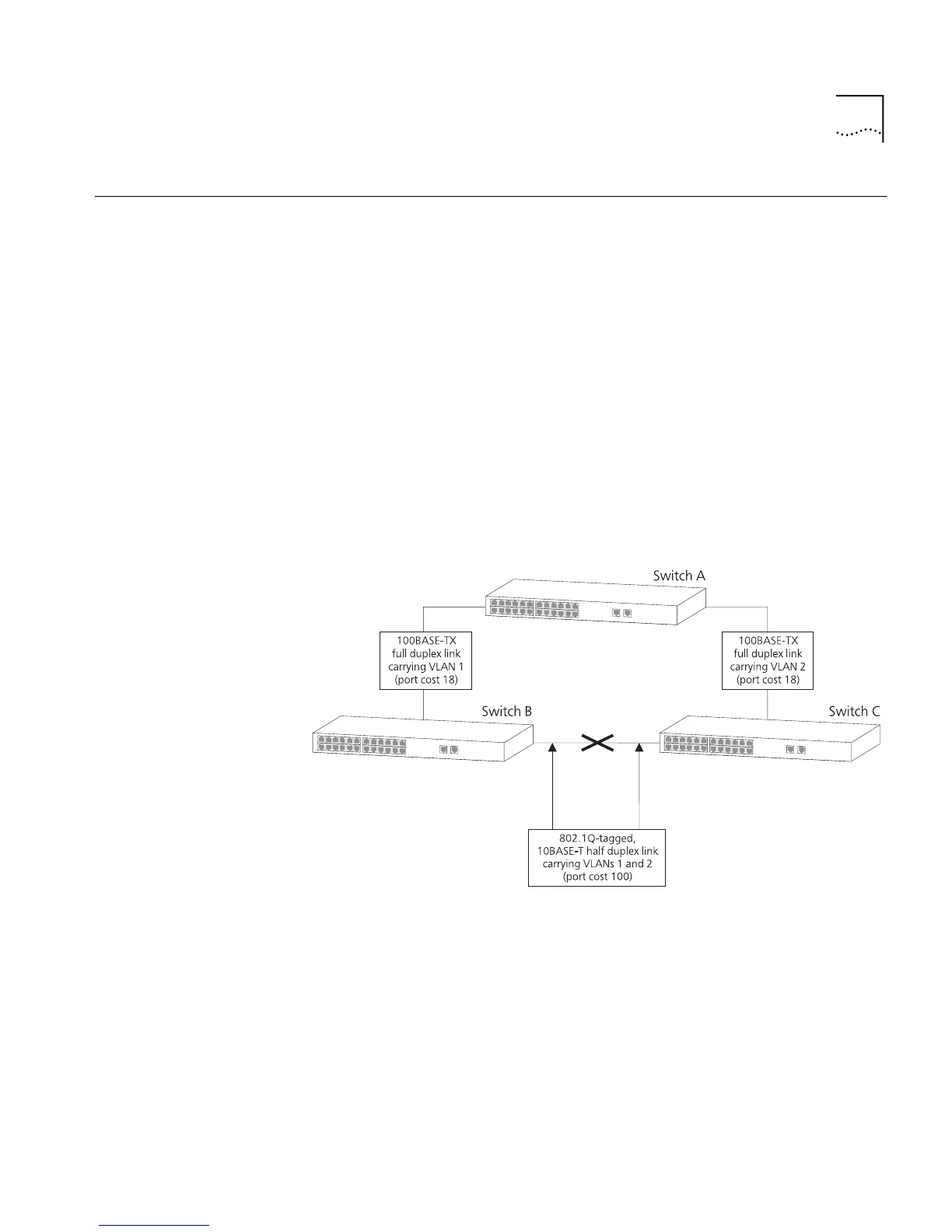Using STP on a Network with Multiple VLANs 201
Using STP on a
Network with
Multiple VLANs
Your Switch does not take into account VLANs when it calculates STP
information — the calculations are only performed on the basis of
duplicate connections. For this reason, some network configurations can
result in VLANs being subdivided into a number of isolated sections by
the STP system.
Figure 50 shows a network containing VLANs 1 and 2, and they are
connected using the 802.1Q-tagged link between Switch B and Switch C.
By default, this link has a path cost of 100 and is automatically blocked
because the other Switch-to-Switch connections have a path cost of 36
(18+18). This means that both VLANs are now subdivided — VLAN 1 on
Switch units A and B cannot communicate with VLAN 1 on Switch C, and
VLAN 2 on Switch units A and C cannot communicate with VLAN 2 on
Switch B.
Figure 50
Configuration that separates VLANs
To avoid any VLAN subdivision, we recommend that all connections
carrying traffic for multiple VLANs have a lower path cost than those
carrying traffic for single VLANs. You can do this in two ways:
■
Using connections that have a higher bandwidth (which, by default,
have a lower path cost)
■
Lowering the path cost of the connections using a Network
Management application
